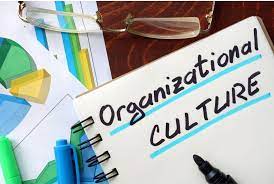
A statement of shared values, no matter how inspiring, does not make a healthy culture. – Tod Bolsinger (Canoeing The Mountains)
I read with great interest a study at Team Stage which reported that only 28% of executives understand their company culture. They stated, “While they understand its importance, they fail to fathom the culture itself.” From a leadership perspective, I found the disconnect quite disturbing. How can one believe culture is important while at the same time failing to understand their own culture?
Imagine, if you will, that you are driving your car and you notice that it is pulling to the left or to the right. Intuitively you know that your car is out of alignment. Knowing that your car is out of alignment is a good thing, but if you ignore it for too long, it’s going to create bigger problems that you will have to address. And the longer you put it off, the more damage it can cause.
Simply having a mission or value statement plastered up on the wall somewhere in the office is no indication that anyone truly knows what it is, how it pertains to them, and how it impacts the day-to-day operation of the organization.
As a leader, you need the awareness of knowing if your organizational culture is out of alignment and what corrections are needed. Here are a few things that may help guide you in that process.
Focus more on alignment than organizing
Writing in the Harvard Business Review, John Kotter states, “The idea of getting people moving in the same direction appears to be an organizational problem. But what executives need to do is not organize people but align them.” In other words, align them around your values. The more your people are aligned with your mission and vision, the healthier it will be.
It will always be hard for your organization to move forward if it’s out of alignment. Just as your car will want to go off the road, so, too, will your organizational culture drift if not properly aligned. Once you take care of alignment, organizing will be a much simpler process.
Lead by example, not by decrees
When only 28% of executives understand their company culture they will not be in a place to lead by example. Here’s the rub – organizational culture is leader driven. If the leader doesn’t get it or know it, then the leader will not be able to align with it.
Writing in A Tale of Two Cultures, David Burkus writes, “People typically do not look to written codes for clues about how to behave; they look to others.” And this is the void leaders must fill. They need to know their culture and the people in your organization ultimately need to look to each other in terms of knowing how to behave – not a poster on the wall. As a leader, you must set an example and it happens when your words and your actions are aligned. Click To Tweet
Final Thoughts
Tod Bolsinger writes that “culture creation work rests on identifying the gaps between aspired values and actual behavior, and then working with the leaders to bring every aspect of the organization into alignment…” As a leader, this is your responsibility. A healthy workplace culture just doesn’t happen – it’s intentionally created.
©2023 Doug Dickerson

 Liz Stincelli is the Founder of Stincelli Advisors where she focuses on helping organizations engage employees and improve organizational culture. She holds a Doctor of Management degree with an emphasis on organizational leadership. Learn more about Liz by visiting her website: www.stincelliadvisors.com
Liz Stincelli is the Founder of Stincelli Advisors where she focuses on helping organizations engage employees and improve organizational culture. She holds a Doctor of Management degree with an emphasis on organizational leadership. Learn more about Liz by visiting her website: www.stincelliadvisors.com
